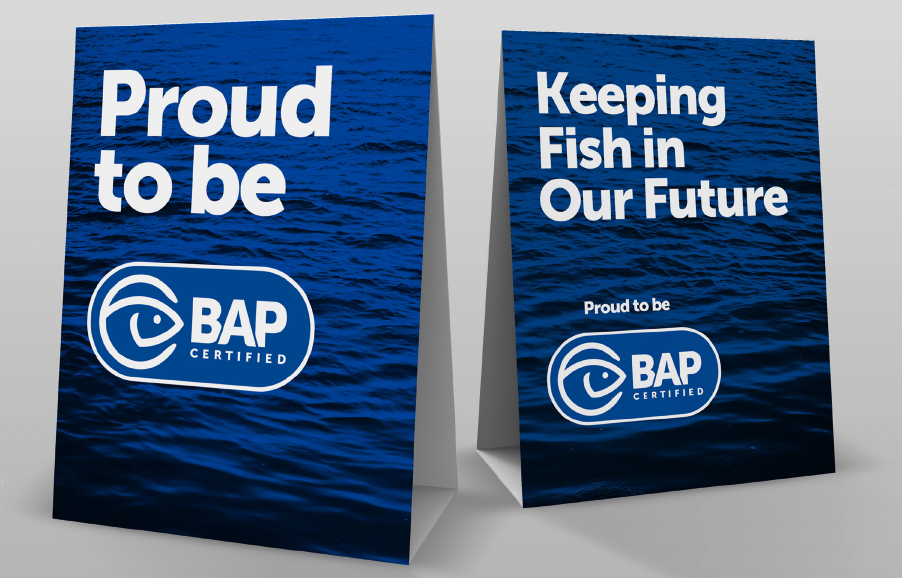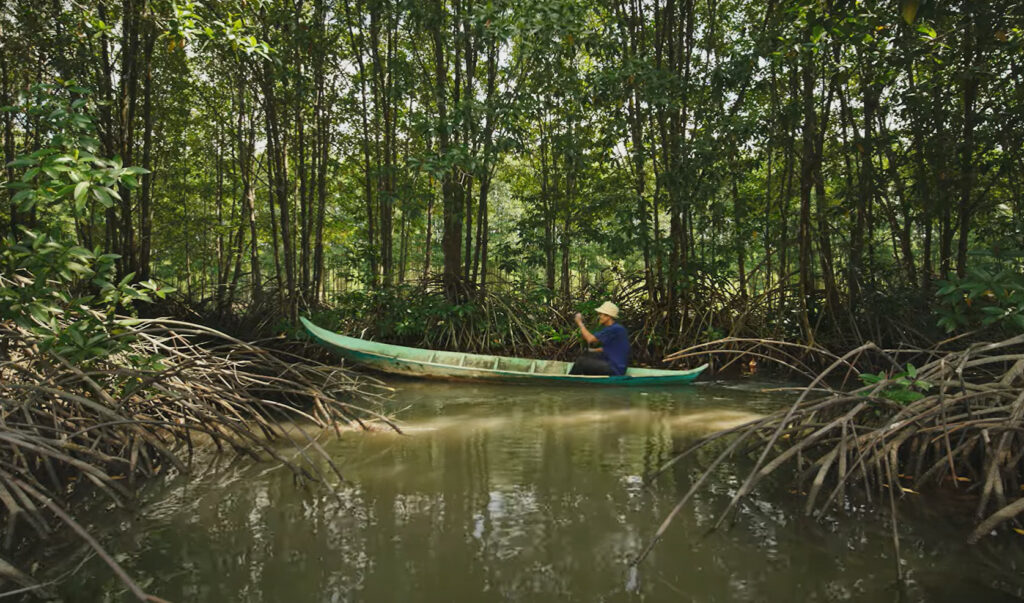Open Letter to Compassion In World Farming
 On May 2, the Global Seafood Alliance (GSA) responded to a Compassion In World Farming (CIWF) campaign intended to discredit the Global Seafood Alliance’s Best Aquaculture Practices (BAP).
On May 2, the Global Seafood Alliance (GSA) responded to a Compassion In World Farming (CIWF) campaign intended to discredit the Global Seafood Alliance’s Best Aquaculture Practices (BAP).
GSA shares CIWF’s sentiment that animal cruelty has no place in fish husbandry. Animal health and welfare has been at the foundation of the BAP certification program since its inception 20 years ago. However, GSA’s approach to animal husbandry is different than CIWF’s approach in that it works directly with the seafood value chain to ensure continuous improvement in best practices in animal health and welfare over time. GSA does not engage in consumer-awareness campaigns designed to discredit other efforts to strengthen best practices in animal health and welfare.
GSA has been engaged with CIWF since 2019, when the nonprofit organization willingly answered questionnaires and provided background on the animal health and welfare component of its BAP standards. Despite the open dialog, in 2020 CIWF launched a campaign targeting the animal health and welfare standards of five seafood certification programs, including BAP. At the time, GSA responded to CIWF in a statement. In 2023, CIWF resurrected its campaign specifically targeting BAP and ignoring the improvements that have been made to the BAP standards since 2000.
In March 2021, GSA released Issue 3.0 of the BAP Farm Standard, which included seven new requirements under its animal health and welfare component. Issue 3.0 now includes 17 clauses and 2,457 words just on animal health and welfare, compared to just nine clauses and 358 words in Issue 2.0 in 2012. The new clauses in Issue 3.0 are:
- Clause 4.6: Mortalities; body condition factor; lesions, abrasions or fin damage; and gill damage or condition shall be measured in each production unit as individual-based welfare indicators of physical health.
- Clause 4.7: Water quality shall be measured in each production unit as group-based welfare indicators of environmental quality and maintained within the tolerance limits established for the species and life-stage farmed.
- Clause 4.8: Feeding response and swimming behavior shall be measured in each production unit as group-based welfare indicators of behavior.
- Clause 4.9: The farm shall have Standard Operating Procedures for aquatic animal handling operations, including crowding, transfer among production units, grading, vaccination and chemical treatment, that limit the stress experienced by farmed aquatic animals during these operations.
- Clause 4.10: Farm workers shall be trained in their roles and responsibilities in maintaining the welfare of farmed aquatic animals.
- Clause 4.11: The welfare of harvested animals that are transported live to processing facilities shall be assessed by documentation of mortality rates during transport.
- Clause 4.12: If aquatic animals are slaughtered on-farm, the farm shall identify the humane slaughter method used, appropriate for the species.
These new clauses are based on research conducted by the Center for Responsible Seafood (TCRS), GSA’s sister nonprofit organization, and Scotland’s University of Stirling as part as a $435,000 grant awarded to TCRS by the Open Philanthropy Project in 2017. That project has concluded, and in April TCRS received a $625,000 grant from Open Philanthropy to continue its research on fish welfare. Researchers are working to:
- Build out the Fish Welfare Community Platform, which contains multiple online education modules
- Develop a fish insensibility model for channel catfish using EEG (electroencephalogram)
- Expand fish welfare knowledge base for pangasius, European sea bass and barramundi
- Develop international guidelines for benchmarking animal welfare standards
- Provide recommendations to BAP Standards Oversight Committee for revisions to the BAP standards
- Develop remote sensing protocols
- Continue to build industry awareness about animal welfare
In its campaign, CIWF takes a black-and-white approach to fish husbandry, ignoring the unintended consequences of imposing broad guidelines to aquaculture, as each species, production method and geography has its own set of complexities. Here is a summary of how the BAP program addresses each of the issues that CIWF voices concern over:
Stocking density: The BAP program is lowering its stocking density limits for certain species and production methods. For example, salmon net pen farms are currently required to stock at a maximum of 2.5% fish to 97.5% water, but this ratio is being changed to 2.1% fish to 97.9% water, based on evidence from scientific studies in Scotland. CIWF would like to see species specific maximum stocking densities, but such standards must account for the wide range of culture systems and management controls around the world, and stocking density is based on water quality. Consider shrimp farming, where highly sustainable intensive farms are being developed with advanced controls for animal health, water and sediment quality, feeding, and harvesting. While the densities are higher in these systems than in conventional ponds, stress, disease, and mortality are greatly reduced.
Antibiotics: The overuse of antibiotics is a major issue in animal farming, and it contributes to antibiotic resistance, a major threat to human health. For this reason, BAP prohibits routine and prophylactic antibiotic use, and since 2021 has excluded the use of antimicrobials that the World Health Organization (WHO) designates as critically important for human medicine.
Wildlife interaction: BAP standards require the exclusion of predators from fish farms and encourage non-lethal methods of control. This ensures farms can readily coexist with local wildlife.
Fasting: BAP standards require farmers to set upper limits for fasting periods. These periods are needed prior to harvest to aid food safety and ensure the quality of finished products.
Enrichment: This topic is not yet well understood nor well developed as it applies to fish farms, so the BAP Program has no requirements at this stage. When evidence becomes available and commercial scale trials are conducted, the BAP program will evolve accordingly. Most fish farms provide conditions for uninterrupted shoaling, which is the dominant social behavior in fish.
Wild caught fish as feed: Through FIFO (fish in: fish out) ratio limits, BAP Standards set bounds for the amounts of wild fish in feeds and thus favor the use of alternative ingredients. At the same time, it is not considered a good objective to completely exclude fishmeal and fish oil from the diets of fish species that would normally consume fish in their natural diets. Appropriate nutrition is important because it directly impacts fish health and welfare.
Slaughter: BAP standards require that fish are slaughtered humanely. At present, Issue 5.1 of the BAP Seafood Processing Standard requires animals to be rendered insensible prior to humane slaughter according to methods such as those recommended by the OIE-World Organisation for Animal Health.
Finally, GSA would like to reemphasize that the BAP standards development and improvement process is open and transparent. The BAP standards are developed by a technical committee of aquaculture experts who are independent and not employed by GSA, and the BAP standards are continually updated by its 12-member Standards Oversight Committee, who represent industry, academia and conservation and are also independent and not employed by GSA. Each time the BAP standards are updated, a public comment period is required to be held to gather input to be considered for the update, and BAP’s program integrity team is required to respond to each comment individually. Any organization, including CIWF, is free to participate in any public comment period.
What’s more, in 2017 BAP was the world’s first aquaculture certification program to be recognized by the Global Sustainable Seafood Initiative (GSSI) when the BAP Finfish and Crustacean Farm Standard and BAP Salmon Farm Standard were determined to be in alignment with all Essential Components of the GSSI Global Benchmark Tool, and that recognition continues to this date.
About the Global Seafood Alliance
The Global Seafood Alliance is an international, nonprofit trade association dedicated to advancing responsible seafood practices through education, advocacy and third-party assurances. Through the development of its Best Aquaculture Practices and Best Seafood Practices certification programs, GSA has become the leading provider of assurances for seafood globally. The organization’s work addresses the full spectrum of responsibility, from environmental responsibility and social accountability to food safety. Established in 1997 as the Global Aquaculture Alliance, GSA is headquartered in Portsmouth, N.H., USA. To learn more, visit www.globalseafood.org.




